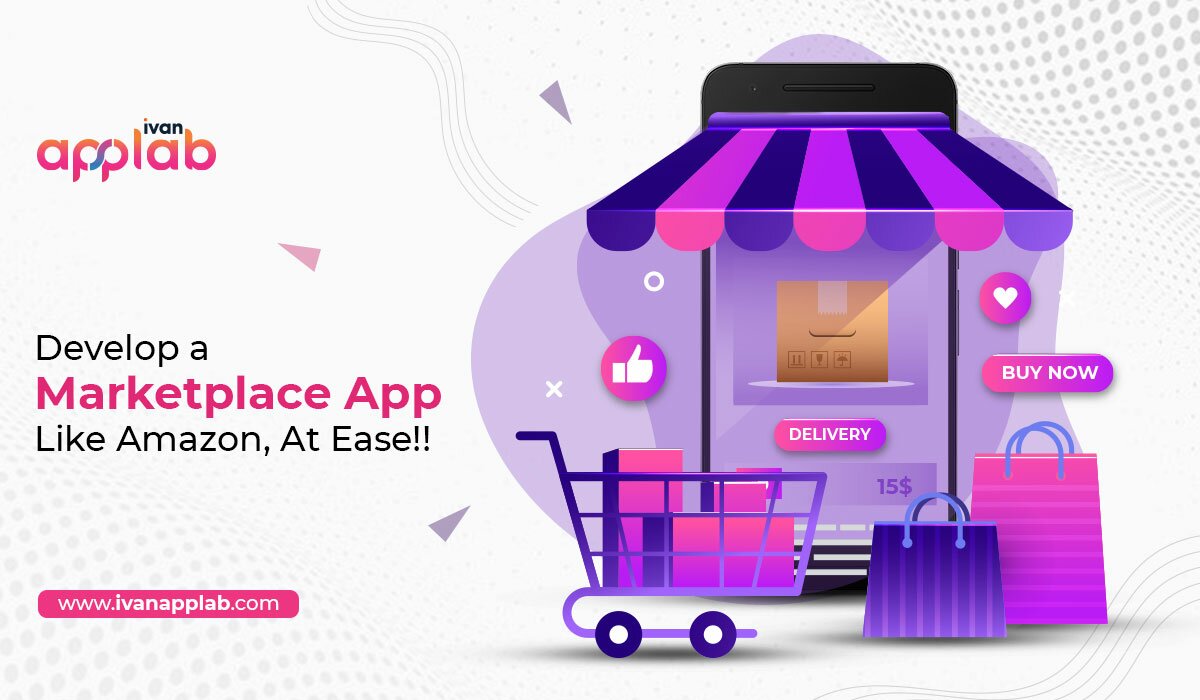

Similar to eCommerce, online marketplaces have elevated people’s buying experiences. Amazon and eBay, two of the largest online marketplaces, have started some. As of this writing, Amazon has more than 300 million active users around the world. A whopping 197 million individuals visit Amazon’s website and app every month, where they buy things.
Amazon’s net revenue is approx 386.06 billion USD, making it a tech giant and a major source of inspiration for entrepreneurs and new companies alike.
For you, establishing a multi-vendor marketplace software like Amazon can be challenging. Adding the correct features and implementing monetization tactics from a mobile application development company are essential to achieving success. Then, how do you plan to build a marketplace app? Let’s get down to the nitty-gritty.
Both suppliers and consumers can participate in an online marketplace at the same time. It acts as a go-between, providing a practical setting and the necessary assurances. A marketplace app differs from a traditional online store in a few ways.
A marketplace app is designed by a mobile application development company to make buying on a mobile or tablet device as simple and efficient as possible. These apps differ in terms of the things they offer, their size, and how they market themselves. There are no more problems with online shopping applications if you use marketplace apps like Amazon.
Every e-commerce firm can learn from Amazon’s success. An appealing user interface and a slew of interesting options are provided by this marketplace behemoth. Following these steps will help you create an Amazon-like marketplace app:
You could make blunders if you don’t do enough study and planning when designing a marketplace app. As a mobile application development company builds a marketplace app, they take into consideration your customers’ wants and behaviors, decide what things you want to sell, and organize your products correctly so that your customers can quickly locate them.
Once you’ve decided on a platform for your app, the next step is to test it out. Apple’s App Store and Google’s Play Store are two of the most popular solutions available. You must decide if you want to target a specific group of people or a big group of people.
Understanding your clients’ Geolocation, determining the time it takes to construct the app, and deciding who your customers are can help a mobile application development company choose the ideal platform.
Mobile app development projects necessitate careful consideration while deciding on the correct technological stack.
Your app’s features determine its long-term viability. So, in addition to its aesthetics, your software should be straightforward to use and devoid of annoyances. This will assist you in turning a casual observer into a potential client. You can save money on development by creating an MVP version of your app.
In order to entice consumers and encourage them to make a financial investment in your software, good UI/UX design is important. In order to avoid making consumers feel as if the app is too difficult to use, keep the design simple. Professionals of a mobile application development company make sure that your users have a nice experience by using soothing graphics, patterns, and colors.
Hire a team of developers to build your Amazon-like marketplace software. You’ll need a wide range of people on your team, including Android and iOS app developers, business analysts, front-end and back-end developers, project managers, UI/UX designers, and QA specialists.
The price of developing a mobile app varies widely depending on the needs of each company. As a result, it is difficult to estimate the exact cost of establishing a marketplace app. However, you may get a more accurate estimate of the final cost by reaching out to a mobile application development company.
Online marketplaces are taking the place of brick-and-mortar retailers in today’s world. You should start developing your marketplace app and forming a community of potential customers as soon as possible. In light of what you’ve learned, it’s now time to enter the marketplace sector.